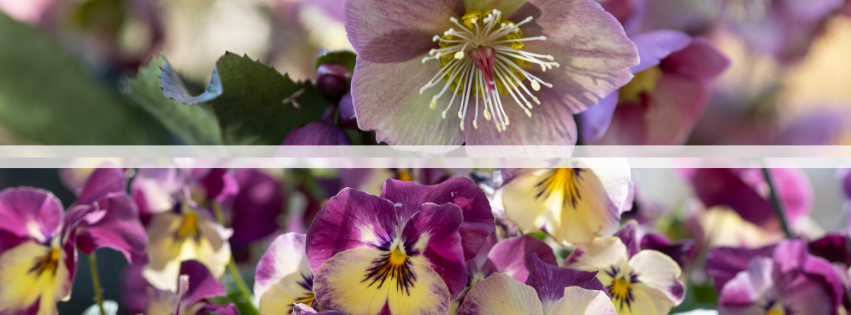In the Northeast, gardeners are always pushing the limits.
This is especially true in early spring, when temperatures can fluctuate wildly, such as a recent week we experienced in Connecticut where the daytime temps neared 70 degrees Fahrenheit but then a few days later, dipped overnight into the 20s.
Thankfully cold temperatures do not hold up the planting season for these plant varieties. Pansies and hellebores are the early spring VIP (very important plants) to consider including in your containers and landscapes for a shot of color.
Pansies
There are a variety of pansies available to the home gardeners, but Cool Wave pansies spread out horizontally, filling in containers and hanging baskets quickly. If planted in ground, the plants can spread 24-30 inches.
The most impressive thing about the pansies? They survive serious overnight temperature dips, so if you forget to cover or bring them inside on a frost night, they will bounce back - such as my example below, when I forgot to bring this hanging basket inside on that aforementioned night with 20 degree temps. Early the next morning, they looked a little sad. But by lunchtime, they had perked up significantly, and by the next day, it was as if that cold snap never happened.
 |
| This Cool Wave Pansy didn't let the chill keep it down for long. Variety shown: Spreading Pansy Cool Wave® Strawberry Swirl. |
Pansies can be used in containers by themselves, or paired with other early spring bloomers, such as alyssum. The plants will overwinter through USDA Zone 5, and will benefit from a layer of mulch for winter protection.
 |
| Wine Cooler Plug & Play Fuseables Sorbet Midnight Glow Viola and Clear Crystals Purple Shades Alyssum. Photo used with permission from Cool Wave Pansies. |
Hellebores
Hellebores are another statement plant to work into garden beds and early spring containers. The Ice N' Roses varieties (Helleborus x glandorfensis) feature red, white, pink and bicolor flowers that face upright, unlike older varieties of hellebores with downward facing blooms.
Ice N’ Roses varieties are low-maintenance perennials and suited for large planters, according to Annika Kuppe of Heuger Gartenbaubetriebe. Make sure to use a frost-proof container with drainage holes. "Helleborus is a deep rooter, so if planting hellebores in a container, you want to use containers that are deep enough. Planters should be thick-walled and sufficiently large to prevent the soil from freezing easily as the plants cannot absorb water when the roots are frozen."
For spring planter combinations, they can be planted with spring-blooming bulbs (daffodils, hyacinths, etc.), as well as perennials including forget-me-not (Myosotis), foam flower (Tiarella) or brightly-colored Heuchera hybrids. Kuppe recommends moving planters to a shady place in the summer, where they will still offer ornamental foliage post-bloom. They can be fertilized with organic fertilizers in spring and fall. (The hellebores are hardy in USDA Zones 5-9).
 |
| The same plant, shown in early March (left) and early April (right). |

No comments
Post a Comment